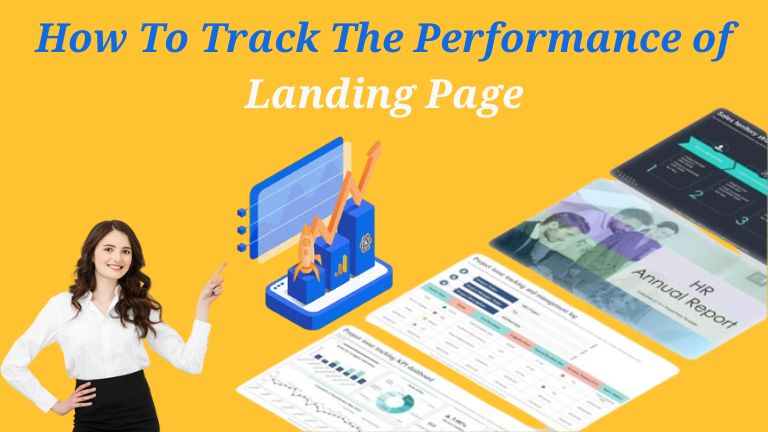
The average conversion rate for landing pages is approximately 2.35%, with the top 10% of sites achieving conversion rates of 11.45% or higher. How do your landing pages compare?
Naturally, the primary objective is to boost landing page conversions. Achieving this requires monitoring results through Google Analytics and identifying areas for improvement. However, there’s more to consider than just conversions.
To address problem areas, understanding key SEO and PPC metrics, their importance, and how to track them is crucial. This information helps optimize your landing pages effectively.
This post focuses on cutting the fluff and honing in on metrics that provide valuable insights. We’ll cover 10 essential landing page performance metrics and how to monitor them. Additionally, we’ll discuss some common vanity metrics that can be safely ignored.
- Conversion Rate
The conversion rate gauges the proportion of visitors who take a desired action on your landing page, such as completing a form, purchasing an item, or subscribing to a newsletter.
To enhance your conversion rate, consider these strategies:
- Evaluate your current performance and pinpoint your value proposition
- Reduce distractions on your page
- Leverage social proof to establish trust
- Instill a sense of urgency
- Ensure your page is mobile-optimized and loads swiftly
By continually testing and refining your landing page, you can elevate your conversion rate and fuel business growth. A high conversion rate signifies that your landing page effectively encourages visitors to undertake the desired action, leading to more leads, sales, and revenue.
- Goal Completion Rate
The goal completion rate assesses the percentage of visitors who achieve a specific objective or set of objectives on your landing page. This metric is vital for determining if your landing page successfully directs visitors toward the desired action.
Defining Goals
To monitor goal completion rate, establish clear goals for your landing page, such as:
- Completing a form
- Making a purchase
- Downloading an ebook
- Subscribing to a newsletter
Improving Goal Completion Rate
To boost your goal completion rate, focus on:
- Simplifying your landing page design and layout
- Reducing distractions and eliminating friction
- Using clear and concise language to convey your value proposition
- Enhancing your call-to-action (CTA) buttons for visibility and clickability.
By improving your goal completion rate, you can elevate conversions, foster business growth, and meet your marketing goals.
Also Read About Why Landing Pages are Important for Business
- Bounce Rate
Bounce rate tracks the percentage of visitors who leave your landing page without further interaction. It’s a key metric that shows how effectively your landing page engages visitors and prompts them to convert.
What constitutes a good bounce rate?
The ideal bounce rate differs based on industry and landing page type. General benchmarks include:
Improving your bounce rate:
- Streamline your landing page design and layout
- Enhance your page’s loading speed
- Use clear and concise language to convey your value proposition
- Implement prominent and actionable calls-to-action
Enhancing your bounce rate can boost engagement, conversions, and ultimately drive business growth.
- Page Views
Page views quantify the number of times visitors have viewed your landing page. This metric is vital for assessing traffic levels and pinpointing improvement areas.
Importance of Page Views
Tracking page views enables you to gauge how effectively your content engages users and drives site traffic. Through page views analysis, you can:
- Determine which pages receive the most and least traffic
- Optimize content to enhance engagement and conversion rates
- Gather insights on your landing page’s performance for data-driven decision-making
To track page views, follow these steps:
- Go to Behavior > Site Content > All Pages in Google Analytics
- Select the specific landing page for tracking
- Review the page view data for insights into your landing page’s performance
By monitoring page views, you can gather valuable insights to optimize your landing page’s performance and make data-driven enhancements.
Also Read About Key Elements of a Landing Page
- Average Time on Page
The Average Time on Page metric indicates how long visitors remain on your landing page, providing insights into user engagement and highlighting potential areas for enhancement.
Importance of Average Time on Page
A high Average Time on Page signifies that users find your content valuable and engaging, which can lead to increased conversion rates and an enhanced user experience. Conversely, a low Average Time on Page may indicate that your content isn’t compelling to users, resulting in a higher bounce rate.
Monitoring Average Time on Page in Google Analytics
To monitor Average Time on Page, follow these steps:
- Go to Behavior > Site Content > All Pages in Google Analytics
- Select the landing page you wish to track
- Review the Average Time on Page data for insights into your landing page’s effectiveness
- Sessions by Source
Tracking sessions by source reveals the origins of your landing page traffic. This metric identifies which marketing channels generate the most conversions, helping you refine your strategy and effectively allocate resources.
Importance of Sessions by Source
Analyzing sessions by source allows you to:
- Identify the most effective marketing channels
- Enhance underperforming channels
- Allocate resources to channels with high conversion rates
- Improve overall landing page performance
Monitoring Sessions by Source in Google Analytics
To monitor sessions by source in Google Analytics, follow these steps:
- Go to Acquisition > All Traffic > Channels in Google Analytics
- Select the landing page you want to track
- Examine the sessions by source data for insights into your landing page’s performance.
- Cost Per Conversion
Monitoring cost per conversion is vital to gauge the success of your landing page campaigns. This metric reveals the expenditure required to acquire each new lead or conversion.
Why Cost Per Conversion Matters
Cost per conversion is crucial because it enables you to:
- Assess the return on investment (ROI) of your marketing efforts
- Identify opportunities for cost reduction through optimization
- Efficiently allocate resources to high-yield channels
- Enhance your overall landing page effectiveness
Calculating Cost Per Conversion
Calculate cost per conversion by dividing the total traffic generation cost by the total number of conversions.
Also Read About Common Landing Page Mistakes to Avoid
- Form Abandonment
Form abandonment happens when visitors begin to complete a form but exit without finishing it. This may be due to security concerns, lengthy forms, numerous distractions, or unnecessary questions.
Why Form Abandonment Matters
Tracking form abandonment allows you to:
- Detect friction points in your form that lead to drop-offs
- Improve form design and structure to decrease abandonment rates
- Enhance the user experience and boost conversions
Calculating Form Abandonment Rate
Determine the form abandonment rate by dividing the number of visitors who started the form by the number who completed it.
- Return vs. New Visitors
Monitoring the ratio of return vs. new visitors is vital to assess your website’s performance and user engagement. This metric indicates how effectively your site retains current users and attracts new ones.
Understanding Return and New Visitors
- Return Visitors: Users who have previously visited your site and come back.
- New Visitors: Users who are visiting your site for the first time.
Reasons to Track Return vs. New Visitors
Tracking this ratio helps you:
- Pinpoint sections of your site that require enhancements to retain users.
- Refine marketing strategies to draw in new visitors.
- Gain insights into user behavior and preferences.
- Boost conversion rates and achieve your goals more efficiently.
How to Track Return vs. New Visitors in Google Analytics
In Google Analytics, navigate to Audience > Behavior > New vs. Returning. This report breaks down the number of new and returning visitors, along with their behavior and engagement statistics.
- Load Speed
Page load speed is critical for the success of landing pages. A slow-loading page can result in high bounce rates, adversely affecting your conversion rates and overall revenue.
The Effects of Slow Load Speed
- A delay of three seconds in load time can increase the bounce rate by 32%.
- If a page takes five seconds to load, the bounce probability jumps by 90%.
Common Causes of Slow Load Speed
- Non-optimized images.
- Excessive use of flash.
- Large media files.
- Too many HTTP requests.
- Bulky code.
- Lack of gZIP compression.
- Not using a Content Delivery Network (CDN).
- Excessive plugins.
Enhancing Load Speed
To accelerate your landing page load speed, implement these strategies:
- Compress images using tools like TinyPNG.
- Minify CSS and JavaScript files to decrease their size.
- Leverage browser caching to store static elements on visitors’ browsers.
- Opt for a fast and reliable hosting service.
- Reduce the use of third-party components.
Conclusion
Monitoring the appropriate metrics is essential for gaining insights into and boosting your landing page’s effectiveness. By concentrating on the top 10 metrics highlighted in this guide, you can pinpoint areas needing enhancement, fine-tune your strategies, and increase conversions and revenue.
By adopting these metrics and consistently reviewing their performance, you can maximize the success of your landing pages. Keep in mind, tracking the correct metrics is critical to making informed choices and maintaining a competitive edge.
Also Read About
